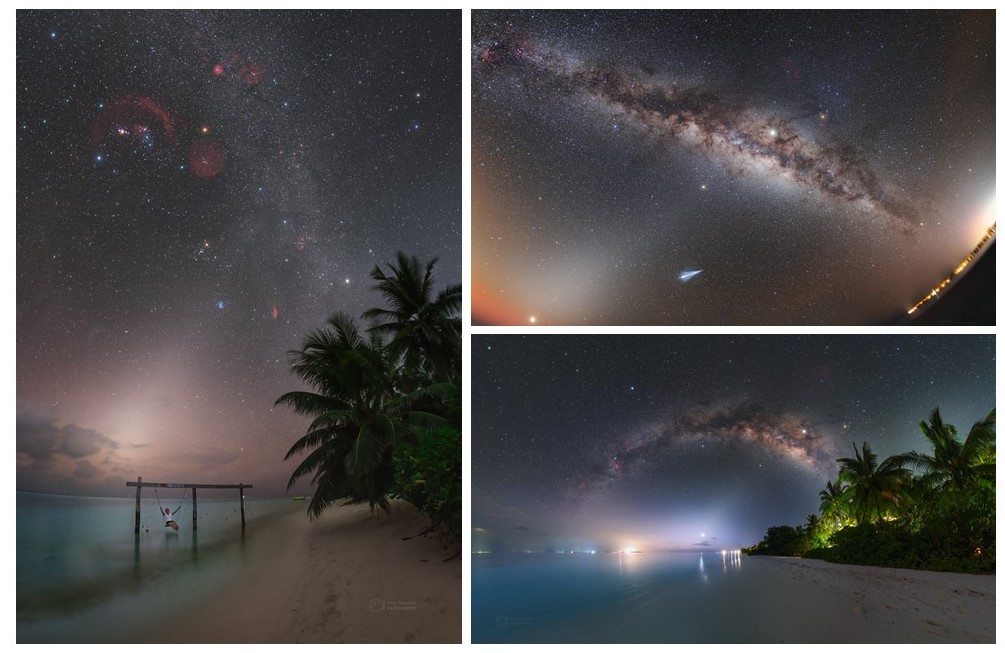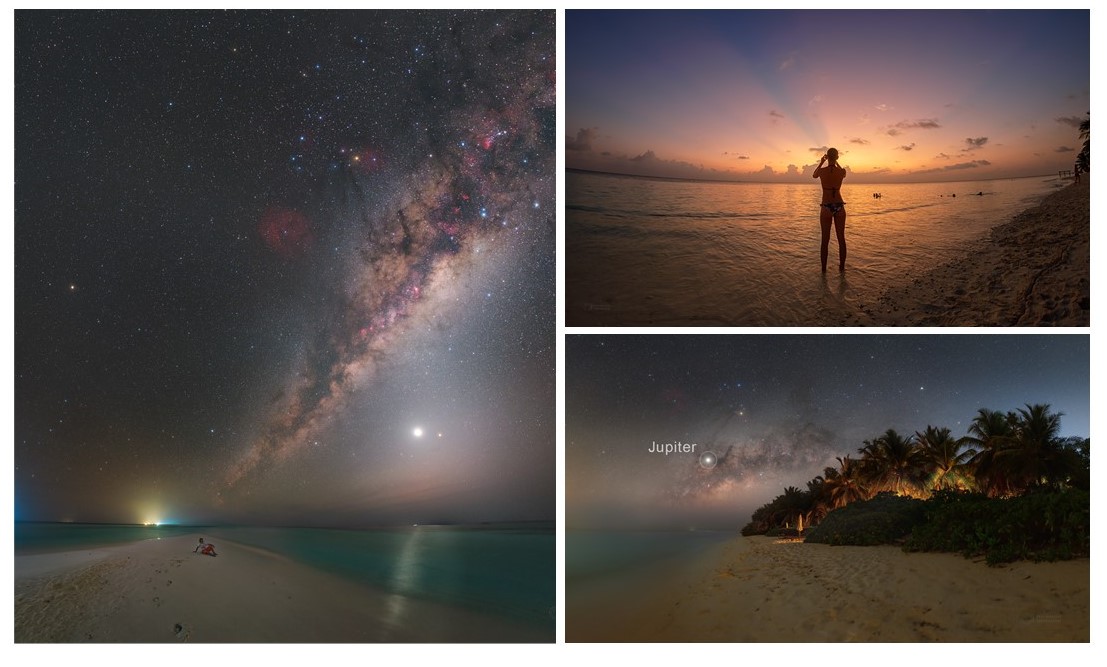
Photo by: Petr Horálek.
Zodiacal light is created when light coming from the Sun is scattered forwards off the particles in the dusty disc surrounding the inner Solar System, and the light comes in the direction of Earth. When viewed from Earth, this creates the appearance of a continuous band of light along the ecliptic, that gets fainter as you look further away from the Sun. In the sky, you can primarily see it like an unsharp light column of light coming from a horizon like light from a very strong halogen lamp shining up in the sky from a boat far away on the ocean.
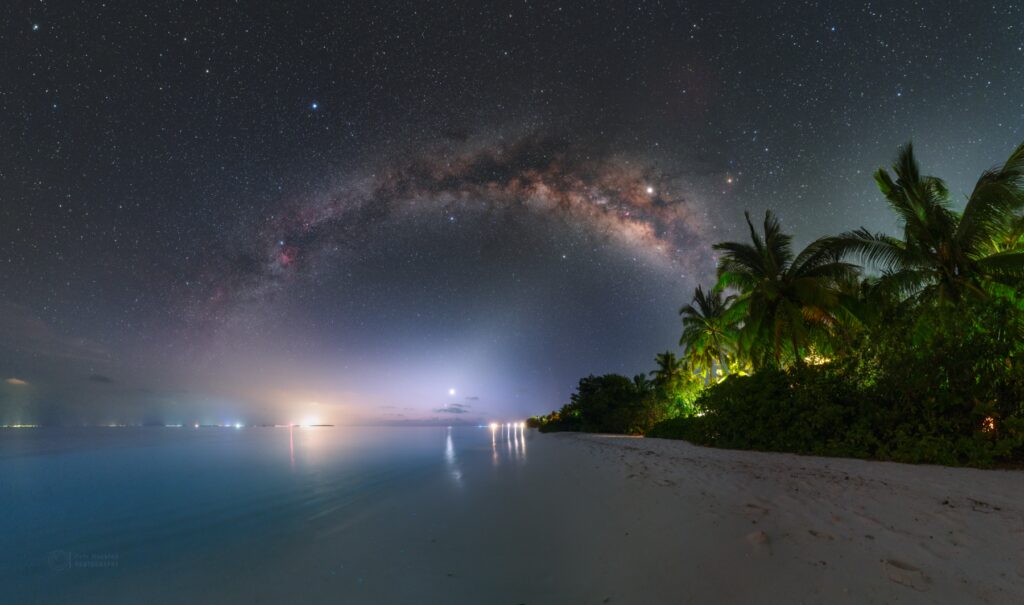
Photo by: Petr Horálek.
When viewed from Earth, this disc of particles – distributed in the plane of the ecliptic (the plane of Earth’s orbit) – appears as a band across the sky passing through the constellations of the zodiac, hence the name Zodiacal Light. As the scattering of sunlight is most effective at smaller angular distances from the Sun, the band of light along the ecliptic gets fainter and narrower further away from the Sun. Along the ecliptic, at the point in the sky opposite the Sun (the antisolar point), coherent backscattering from dust particles further out in the Solar System beyond the Earth’s orbit leads to the oval patch of light known as the Gegenschein. The name was given by the German explorer Alexander von Humboldt (1769-1859). Gegenschein is best visible during midnight time when it gets to the highest point in the sky (as the sun is lowest below the horizon). But to spot it, you genuinely need a naturally dark sky.

Photo by: Petr Horálek, Tomáš Slovinský, AURA, NOIRLab.
The Zodiacal Light phenomenon seems to have been first investigated in the late 1600s, by the Italian astronomer Giovanni Cassini (1625-1712) and the Swiss mathematician Nicolas Fatio de Duillier (1664-1753). They were absolutely fascinated with this light in the sky and, of course, back in the 17th century, there was very little light pollution, so for them, it was relatively easy to observe this phenomenon, even from cities. Unfortunately, harmful light pollution has increased a lot, and so now we must travel far away from cities just to see it.
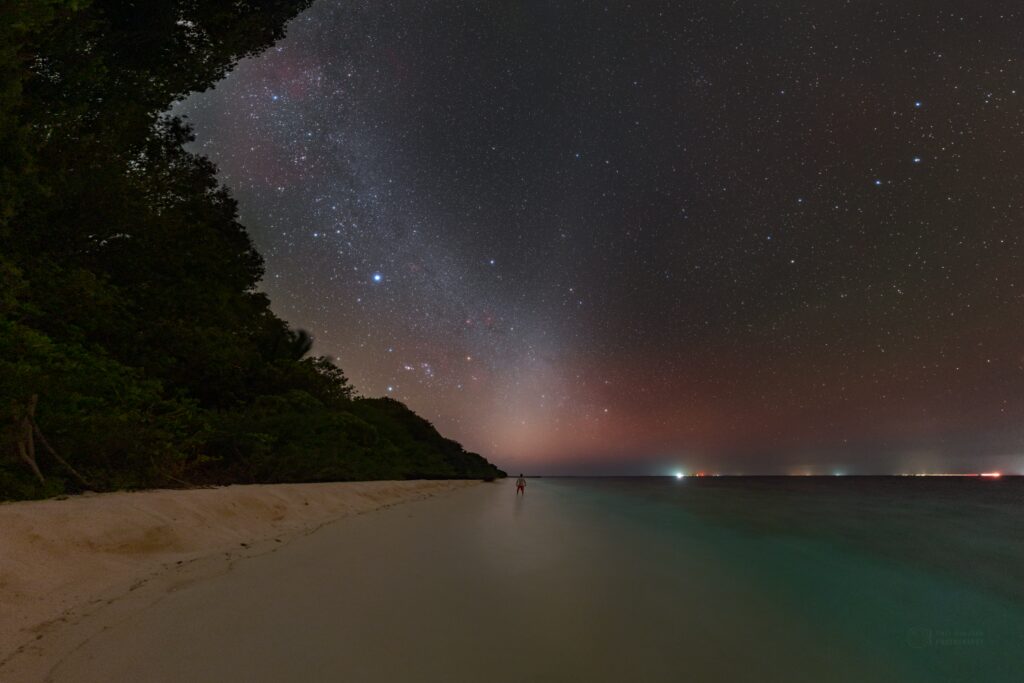
Photo by: Petr Horálek.
Astronomers studied the light even deeper, among them even famous British astrophysicist and lead guitarist of the band Queen, dr. Brian May, published 2007 very extensive study of the light in his thesis. In the thesis, he focuses on structures in the disc of particles in the Solar System causing the Zodiacal Light, and on their possible origin. Further research done by infrared observations from the IRAS satellite and COBE satellite revealed that most of the particles have sizes in the range of 1 to 100 µm. Since the solar radiation pressure accelerates particles away from the Sun, the dust needs to be constantly replenished. This replenishment is primarily served by crumbling icy comets, but also by colliding asteroids and possibly interstellar dust. Studies also show that over 85 percent of the cometary material in the zodiacal cloud comes from the dust of so-called Jupiter-family comets – comets with orbital periods less than 20 years. They are named as such since their current orbits are primarily determined by the gravitational influence of Jupiter. Recent observations of the Juno spacecraft show the origin of the dust in the Zodiacal cloud could come even from the dusty planet Mars. So, there is still so much exciting to be discovered about the Zodiacal Light, which makes it even more exciting the see it with your own eyes!
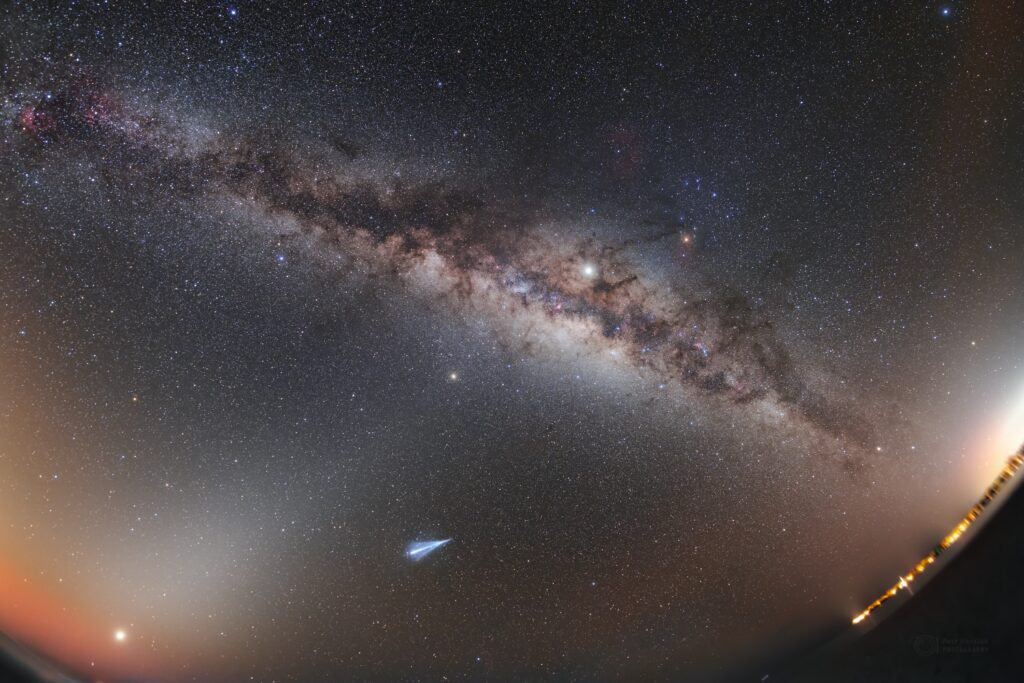
Photo by: Petr Horálek.
The best places to observe Zodiacal Light are in the belt of Earth between the Tropic Capricorn and Tropic Cancer, but especially from zones around the equator. As the Earth moves around the sun and seasons change due to the tilt of Earth’s rotation axis, even the tilt of the Zodiacal Light changes during the year for both moments after dusk and before dawn. From places of the equator, the Zodiacal Light is observable the whole year and the best seasons (when the column of the light is orientated upright) are in December after dusk over the western horizon and in June before the dawn over the Eastern horizon. The so-called “Gegenschein” is best visible around the equinoxes (September and March) just above your head around midnight time. But again-for that, you genuinely need a naturally dark contrast sky as the Gegenschein is very faint.
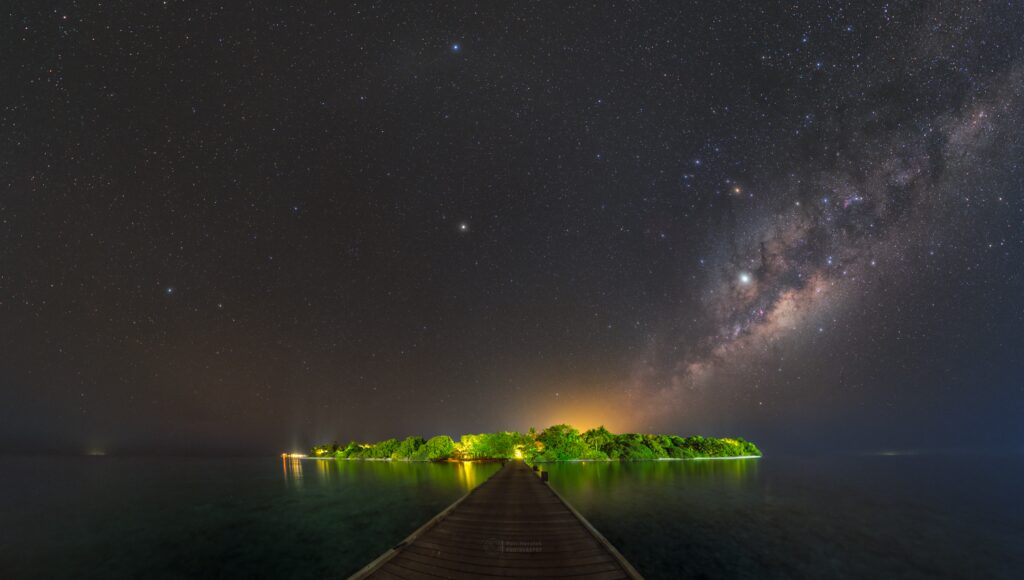
Photo by: Petr Horálek.
Of what was mentioned before, the Zodiacal Light is very well observable from the Maldives with their location by the equator. But to observe it, you need to find a place far from sources of light pollution, caused by i.e. halogen lamps, glowing ships and illuminated resorts, ports or cities. The best view of the Zodiacal Light is on a beach in the shade of any artificial lights. Unfortunately, not all Maldivian islands are doing so well; many of them use light where it is not needed (lights shine with great intensity up into the sky, bright ball lights are often used instead of directional lights that would only shine down to the ground). One of the islands where you can still see the beauty of the night sky is, for example, Thoddoo, especially its the southeastern part. If the Maldivian government and the owners of the accommodation centers would come up with a plan to effectively reduce light pollution by installing the right and nature-friendly lamps (which is very well described by International Dark Sky Association), it would also become a truly worldly unique paradise for enjoying the gems of the night sky!

Photo by: Petr Horálek.
Something about the author and photographer of this post
PETR HORÁLEK was born in 1986 in Pardubice, Czech Republic. He studied Theoretical Physics and Astrophysics at Masaryk University Brno (graduated in 2011) and Theoretical Physics in Silesian University of Opava (graduated in 2022). He worked briefly as an observer of fireballs at the Department for Interplanetary Matter of the Astronomical Institute of Academy of Sciences of Czech Republic, now he is astrophotographer and popularizer of astronomy, awarded also by NASA. From 2011, he fell in love with astrophotography and decided to take a year-long trip around the world to improve his skills in that field. As citizen of a light-polluted Czech Republic, he travels the world for naturally dark places in show people in polluted cities what are they missing (not only) above their heads. A long route through the Canary Islands, Australia, New Zealand, the Cook Islands and South Africa brought him in the end into the heart of the Atacama Desert at ESO’s La Silla and Paranal Observatory in 2015 (when he became the ESO Photo Ambassador), later in NOIRLab observatories (as NOIRLab Photo Envoy) and, of course, the Maldivian Islands in 2019. Petr specialises in photographing rare night-sky phenomena. His images capture unique moments, which he calls “pearls of astronomy”, that add to the immeasurable beauty of a dark starry sky. Something, he thinks that everyone should see at some point in their lives.
See more photos by Petr Horalek on his websites:
